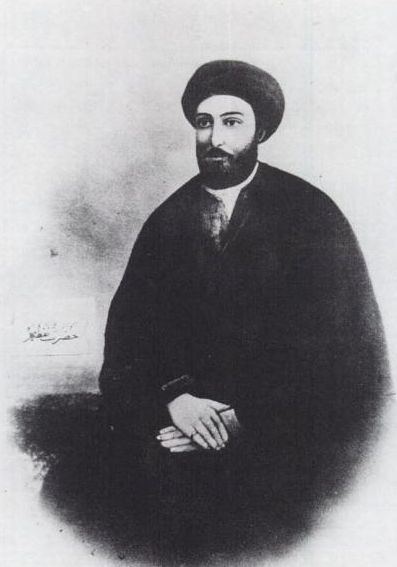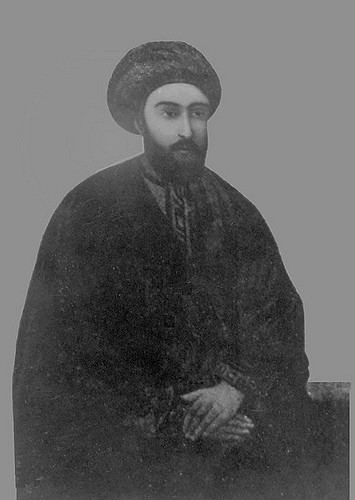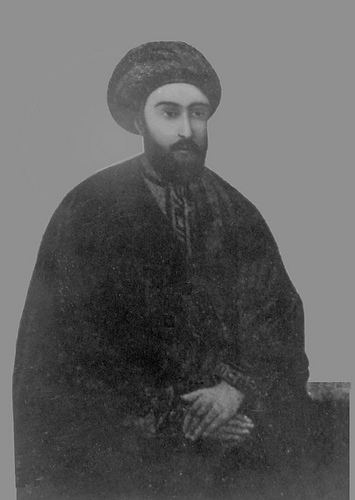Name Kazim Rashti | Predecessor Shaykh Ahmad Children Sayyed Ahmad Rashti | |
 | ||
Sayyid Kāẓim bin Qāsim al-Ḥusaynī ar-Rashtī (1793–1843) (Arabic: سيد كاظم بن قاسم الحسيني الرﺷتي), mostly known as Siyyid Kázim Rashtí (Persian: سید کاظم رشتی), was the son of Sayyid Qasim of Rasht, a town in northern Iran. He was appointed as the successor of Shaykh Ahmad al-Ahsa'i, and led the Shaykhí movement until his death.
Contents

He came from a family of well known merchants. He was a Mullah who, after study of the Islamic writings told his students about the coming of the Mahdi and the "Masih" (the return of Christ) and taught them how to recognize them. After his death in 1843, many of his students spread out around Asia, Europe and Africa for the search.

Upon his death he was buried near the tomb of Imam Husayn in Karbala.
Successorship
On the death of Sayyid Kazim on 31 December 1843, some Shaykhis went on to become Babis, some of whom later became Bahais, and the rest split into three factions. It is reported that before dying, instead of appointing a successor, he sent his disciples out to find the Promised One. One of his most noted followers, Mullá Husayn said:
"Our departed teacher insistently exhorted us to forsake our homes, to scatter far and wide, in quest of the promised Beloved... Regarding the features of the Promised One, he told us that He is of a pure lineage, is of illustrious descent, and of the seed of Fatimah. As to His age, He is more than twenty and less than thirty. He is endowed with innate knowledge. He is of medium height, abstains from smoking, and is free from bodily deficiency."In 1844 Mullá Husayn, after meeting the Siyyid `Alí-Muhammad (the Báb) in Shiraz accepted him as the Mahdi.
The Báb's relationship to Sayyid Káẓim
The Shaykhis had previously met Siyyid `Alí-Muhammad in Karbila' when he attended the meetings of Sayyid Káẓim. There is disagreement over the amount of time Sayyid Mírzá `Alí-Muhammad stayed in Karbila' and the frequency of his attending Sayyid Káẓim's lectures; Bahá'í sources state that the Báb only occasionally attended the meetings, while sources more critical to the Bahá'í Faith state that he stayed in Karbila for a year or two and learned the Shaykhi teachings. In the Bab's own writings, however, he refers to the Shaykhi leader as his teacher. Some statements include:
